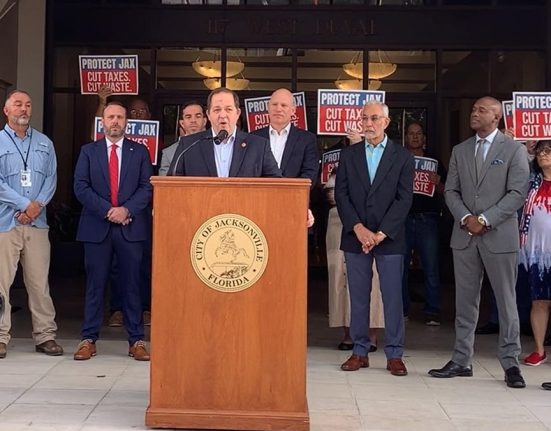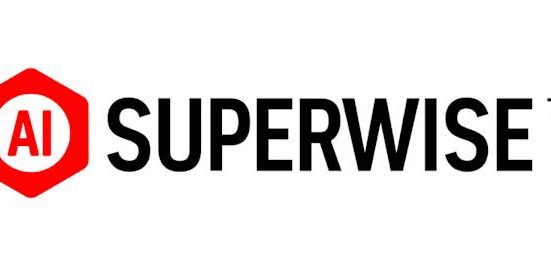Editorial Note: We earn a commission from partner links on Forbes Advisor. Commissions do not affect our editors’ opinions or evaluations.
Today’s average mortgage rate on a 30-year fixed-rate mortgage is 6.55%, down 2.24% from the previous week, according to the Mortgage Research Center.
Borrowers may be able to save on interest costs by going with a 15-year fixed mortgage, which will often have a lower rate than a 30-year, fixed-rate home loan. The average APR on a 15-year fixed mortgage is 5.57%. However, a 15-year mortgage means you are paying off the house in half the amount of time compared to a 30-year term, so your monthly payments will be higher.
If you want to refinance your existing mortgage, check out the average refinance rate.
30-Year Mortgage Rates Drop 2.24%
Today’s average rate on a 30-year, fixed-rate mortgage is 6.55%, which is 2.24% lower than last week.
The interest plus lender fees, called the annual percentage rate (APR), on a 30-year fixed mortgage is 6.58%. The APR was 6.73% last week.
To get an idea about how much you might pay in interest, consider that the current 30-year, fixed-rate mortgage of 6.55% on a $100,000 loan will cost $635 per month in principal and interest (taxes and fees not included), the Forbes Advisor mortgage calculator shows. The total amount you’ll pay in interest during the loan’s lifespan is $129,323.
15-Year Mortgage Rates Drop 2.92%
The average interest rate on a 15-year mortgage (fixed-rate) fell to 5.52%. This same time last week, the 15-year fixed-rate mortgage was at 5.69%.
On a 15-year fixed, the APR is 5.57%. Last week it was 5.74%.
At today’s interest rate of 5.52%, a 15-year fixed-rate mortgage would cost approximately $818 per month in principal and interest per $100,000. You would pay around $47,725 in total interest over the life of the loan.
Jumbo Mortgage Rates Drop 1.52%
The current average interest rate on a 30-year, fixed-rate jumbo mortgage (a mortgage above 2025’s conforming loan limit of $806,500 in most areas) is 6.82%—1.52% lower than last week.
A 30-year jumbo mortgage at today’s fixed interest rate of 6.82% will cost you $653 per month in principal and interest per $100,000. That adds up to approximately $135,557 in total interest over the life of the loan.
Trends in Mortgage Rates for 2025
Although mortgage rates mainly fell after reaching a high in spring 2024, they surged again in October 2024. This is despite the Federal Reserve’s cuts to the federal funds rate (its benchmark interest rate) in September, November and December 2024.
While rates have fallen somewhat since mid-January 2025, experts don’t expect them to drop significantly anytime soon.
When Will Mortgage Rates Go Down?
Mortgage rates are influenced by various economic factors, making it difficult to predict when they will drop.
Mortgage rates follow U.S. Treasury bond yields. When bond yields decrease, mortgage rates generally follow suit.
The Federal Reserve’s decisions and global events also play a key role in shaping mortgage rates. If inflation rises or the economy slows, the Fed may lower its federal funds rate. For example, during the Covid-19 pandemic, the Fed reduced rates, which drove interest rates to record lows.
A significant drop in mortgage rates seems unlikely in the near future. However, they may decline if inflation eases or the economy weakens.
What Affects Mortgage Rates?
The Federal Reserve’s restrictive monetary policy – including its interest rate hikes, which it’s using to restrain inflation – is the primary factor that’s pushing long-term mortgage rates higher. The state of the economy and housing market also affects mortgage rates. As for what interest rate the lender might offer you, this depends on your debt-to-income (DTI) ratio and credit score, both of which indicate your risk as a borrower.
Related: Mortgage Rates Forecast And Trends
How To Compare Mortgage Rates
Shop around and talk to various lenders to get a sense of each company’s mortgage loan offerings and services. Don’t go with the first lender quote you receive; instead, compare the best mortgage rate quotes to get a deal. In particular, consider what fees they charge, what fees they’re willing to waive and what closing assistance they might provide. Make sure any special offers or discounts don’t come at the cost of a higher mortgage rate.
Be sure to apply with each lender within a 45-day window. During this window, you can have multiple lenders pull your credit history without additional impact on your credit score.
Is This a Good Time To Buy a House?
Mortgage rates remain elevated, and the nation’s housing supply remains limited. The low inventory is preventing house prices from dropping. Meanwhile, the combination of high mortgage rates and appreciated home values will continue to present an obstacle for many prospective homebuyers seeking affordable housing.
How Are Mortgage Rates Determined?
Home loan borrowers can qualify for better mortgage rates by having good or excellent credit, maintaining a low debt-to-income (DTI) ratio and pursuing loan programs that don’t charge mortgage insurance premiums or similar ongoing charges that increase the loan’s APR.
Comparing rates from different mortgage lenders is an excellent starting point. You may also compare conventional, first-time homebuyer and government-backed programs like FHA and VA loans, which have different rates and fees.
Several economic factors influence the trajectory of rates for new home loans. For example, Federal Reserve rate hikes indirectly cause the interest rates for many long-term loans to increase. Rates are more likely to decrease when the Fed pauses or decreases its benchmark Federal Funds Rate.
The inflation rate and the general state of the economy also impact interest rates. High inflation and a strong economy typically signal higher rates. Cooling consumer demand or inflation may lead to rate decreases.
What Is the Best Type of Mortgage Loan?
As you compare lenders, consider getting rate quotes for several loan programs. In addition to comparing rates and fees, these programs can have flexible down payment and credit requirements that make qualifying easier.
Conventional mortgages are likely to offer competitive rates when you have a credit score between 670 and 850, although it’s possible to qualify with a minimum score of 620. This home loan type also doesn’t require annual fees when you have at least 20% equity and waive PMI.
Several government-backed programs are better when you want to make little or no down payment:
- FHA loans. Borrowers with a credit score above 580 only need to put 3.5% down and applicants with credit scores ranging from 500 to 579 are only required to make a 10% down payment with FHA loans.
- VA loans. Servicemembers, veterans and qualifying spouses don’t need to make a down payment when the sales price is less than the home’s appraisal value. VA loan credit requirements vary by lender.
- USDA loans. Applicants in eligible rural areas can buy or build a home with no money down using a USDA loan. Moderate-income borrowers can qualify for a 30-year fixed-rate term through the Guaranteed Loan Program. Further, buyers with a very low or low income can receive a 33-year term and payment assistance is available through the agency’s Direct Loans program. Credit requirements differ by lender.
Frequently Asked Questions (FAQs)
What is a good mortgage rate?
A competitive mortgage rate currently ranges from 6% to 8% for a 30-year fixed loan. Several factors impact mortgage rates, including the repayment term, loan type and borrower’s credit score.
How often do mortgage rates change?
Lenders adjust mortgage rates daily based on economic conditions, inflation, bond market movements and Federal Reserve actions.
If you’re shopping around for a mortgage, remember that you might be able to lock in a rate for 30 up to 120 days, depending on the lender. Note that some lenders charge a fee to lock your rate while others offer the service for free.
What determines your interest rate?
National average interest rates depend on economic and market conditions, including the bond market, inflation, the economy and Federal Reserve decisions.
Lenders set rates based on the loan type and term. In general, shorter terms tend to come with lower rates. Additionally, making a larger down payment signals less risk to the lender, which could get you a better rate.
Other factors that can impact your rate include your credit score, debt-to-income (DTI) ratio, income and property location.







